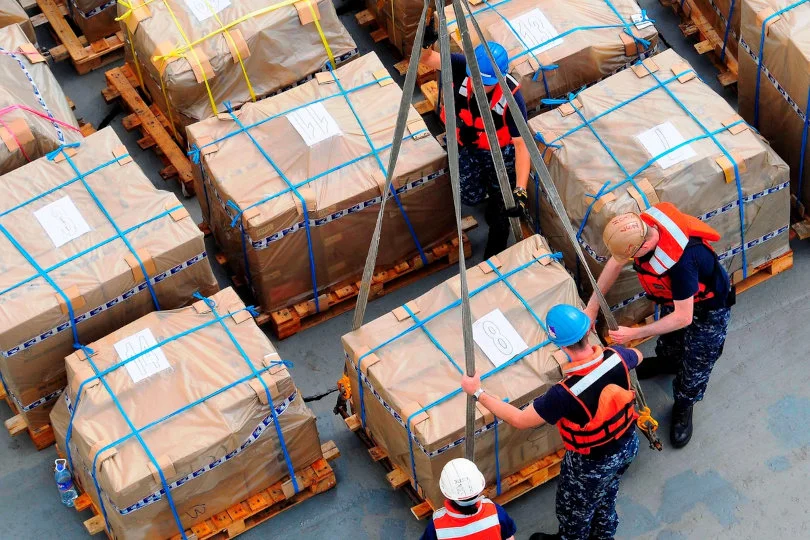These days, businesses must make every effort to turn the intricacy of the supply chain into a competitive advantage. This necessitates the implementation of solutions that streamline the logistics of production and warehousing, cut down on expenses and delivery times, and support the company’s competitive growth. If at all possible, the decision should be made on an integrated solution that can boost the warehouse’s competitiveness while also lowering supply chain expenses, protecting worker safety and the environment, or sustainability.
What is the logistics flow?
The established phases that an item travels through, from production to marketing, including transportation, storage, and distribution, are all included in the logistics flow. Optimizing the Supply Chain begins with properly managing these activities, which are defined by the continuous flow of information and resources. As a result, it’s critical to understand your company’s logistics in great depth. Planning and demand studies are the first steps in creating an ideal logistics flow. Without it, it would be impossible to manage inventories, schedule the rate of production, plan the route for transportation to the point of sale, and other tasks.
Read also: The Main Supply Chain Trends for 2024 You Can’t Afford to Ignore
Advantages of effectively managing the warehouse’s logistics flows
To maximize the benefits of the supply chain, a company’s logistical flows must be managed optimally. There are many benefits if the solution’s calibration is built in an ideal manner. Let’s look at a few of them.
It is sufficient to say that putting in place one of the various kinds of automated warehouses or robotic handling vehicles will enable you to increase output, minimize errors, better utilize information, promote client loyalty, and ultimately lower operating costs—which is, after all, one of the main goals of any corporate restructuring intervention.
Consequently, in order to benefit from these advantages, the quality of the Warehouse Management System (WMS) that is chosen is essential. All of the options must be considered and the best option must be selected when selecting warehouse management software. The lack of uniformity in the product register, inventory irregularities that cause issues while counting the items in the warehouse, and the difficulty of having consistent and distinct coding for every reference are some of the common issues that are typically experienced. Therefore, to position the adopted IT system to offer really helpful support, we must constantly attempt to address issues of this kind in advance.
The optimal solutions
The market provides solutions that meet these requirements as well as the modularity requirement, enabling customization of the solution to meet the unique demands of businesses.
Therefore, research needs to focus on finding solutions that, as previously said, lower supply system costs and may even result in quantified savings on inventory times, space usage, vehicle handling, and maintenance expenses. In other words, by using strong algorithms to optimize all logistical and manufacturing activities, operators will be able to carry out their everyday tasks as efficiently as possible. This path is taken by solutions that are open to automation and capable of supporting things like aided driving of handling vehicles.
Operating in today’s marketplaces calls for sticking to core needs such as customization, scalability, adaptability, and integration. Regardless of technology, we require solutions that can interface with all the most efficient and promising functions in the logistics world, such as corporate information platforms, advanced automation technologies, geolocation systems, and the concept of logistics 5.0. In a world where Industry 5.0 is the undisputed leader, many businesses have chosen to automate their logistics to stay competitive. In this regard, complete or partial automation of the logistics chain’s operating cycles, including information transfer, significantly enhances logistics flow management.
The digitalization of logistics flows
There are several benefits to being able to oversee different supply chain components and different operations for each component inside the warehouse. First off, there is a significant reduction in the margin of error caused by inconsistent inventory and a loss of visibility into the true condition of the warehouse, as well as a reduction in the amount of time spent moving items. It is impossible to operate without always knowing the exact location of the items kept in the warehouse and monitoring their every move. Additionally, having access to information from every operation facilitates an extensive understanding of the warehouse’s level of operation and makes it easier to resolve unforeseen issues, ensuring that work continues without interruptions.
Remember that building a true, highly digitalized warehouse can serve as an additional logistical tool.
In the years to come, automated logistics will become a growing component in addition to the management of logistics flows. Innovative developments in technology offer new ways to fulfill the industry’s expanding needs. The components of a warehouse will become more interconnected and capable of responding to particular requirements as a result of artificial intelligence and the Internet of Things. It will be essential to have excellent software and automation integration to keep the supply chain procedures foremost overall. Staff members’ roles and skill sets will therefore evolve.
Conclusions: warehouse logistics flows at the top
Increasing the value of the good or service at the lowest possible cost is the primary goal of logistics, which is partially attained through the effective management of logistics flows. For this reason, current WMS and SCES (Supply Chain Execution Systems) are essential components of Logistics 4.0: they are the ones that, apart from autonomous forklifts, robotics, drones, and automated guided vehicles, coordinate operations and direct executive procedures. Advanced supply chains often rest on the foundation of logistics flows.



